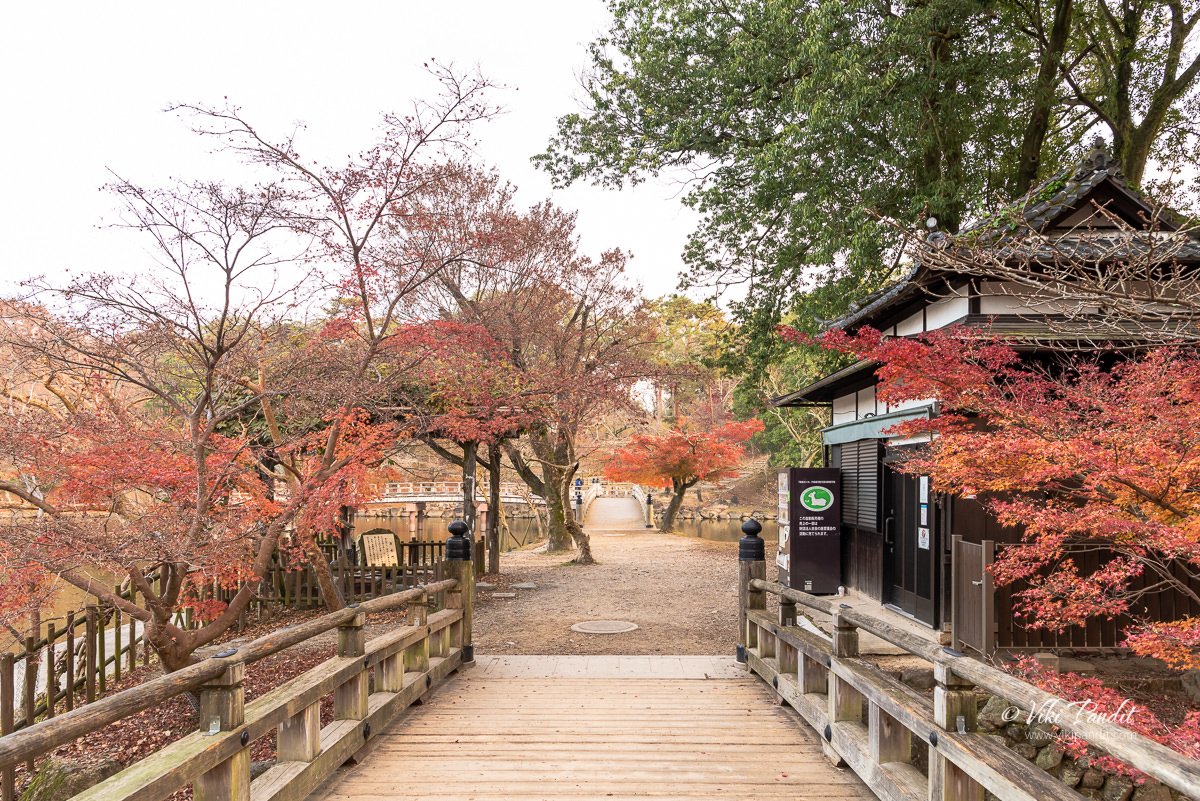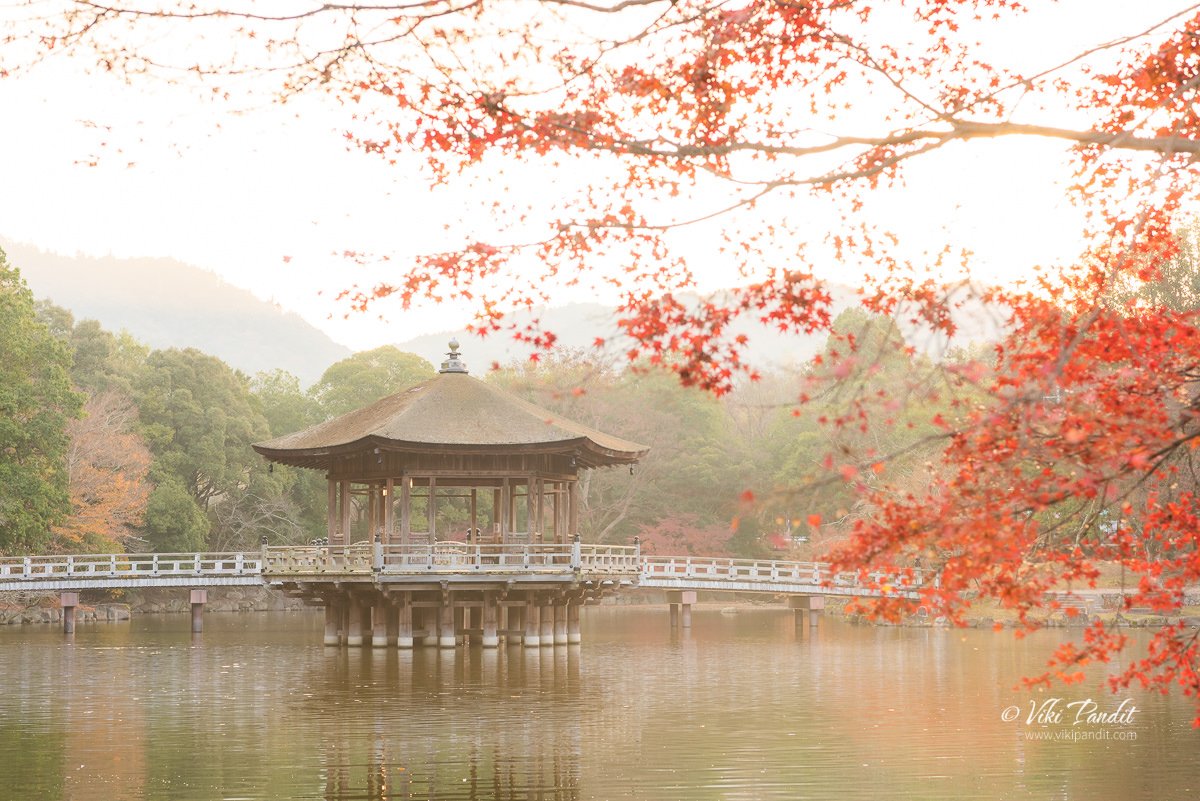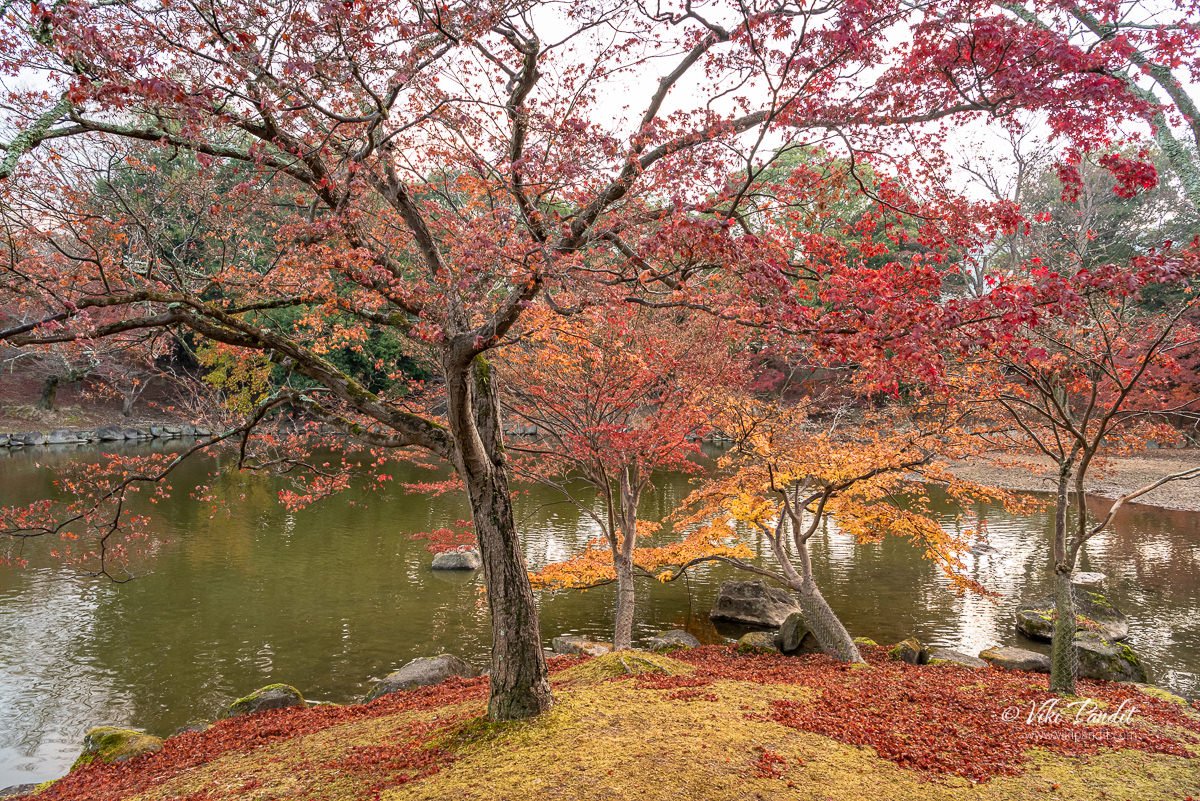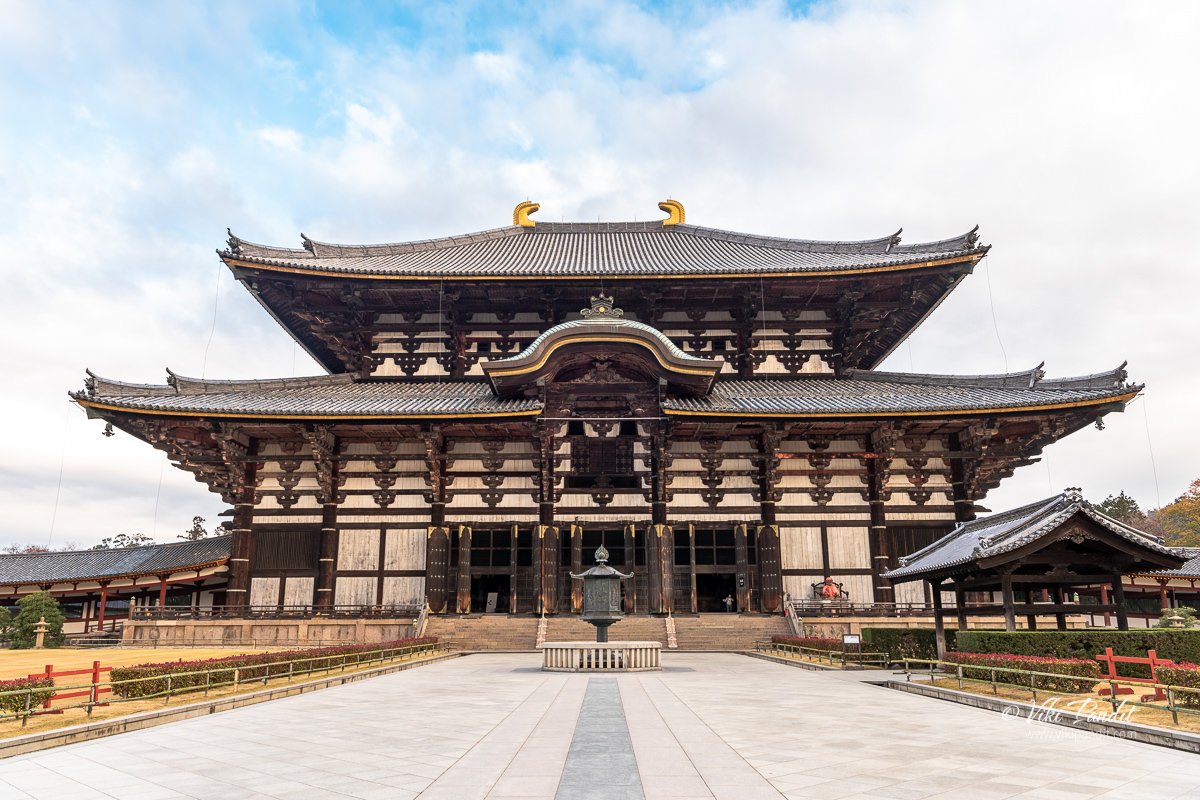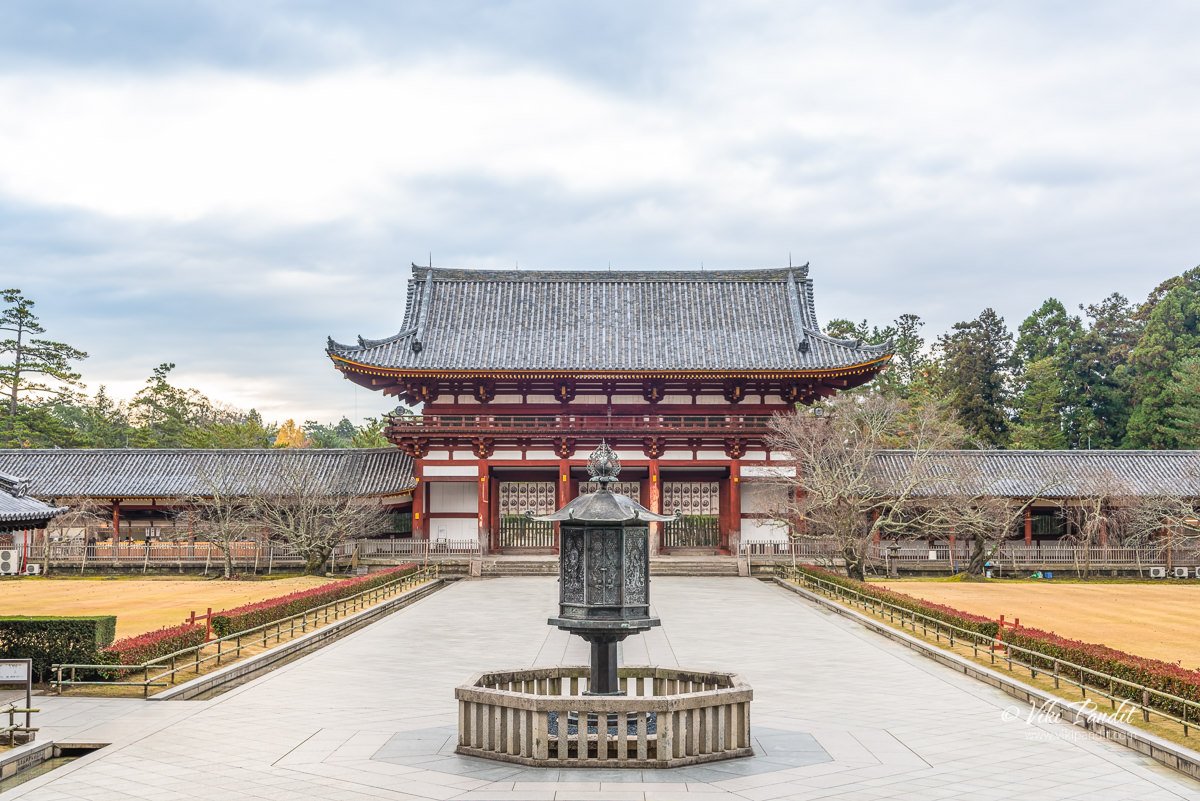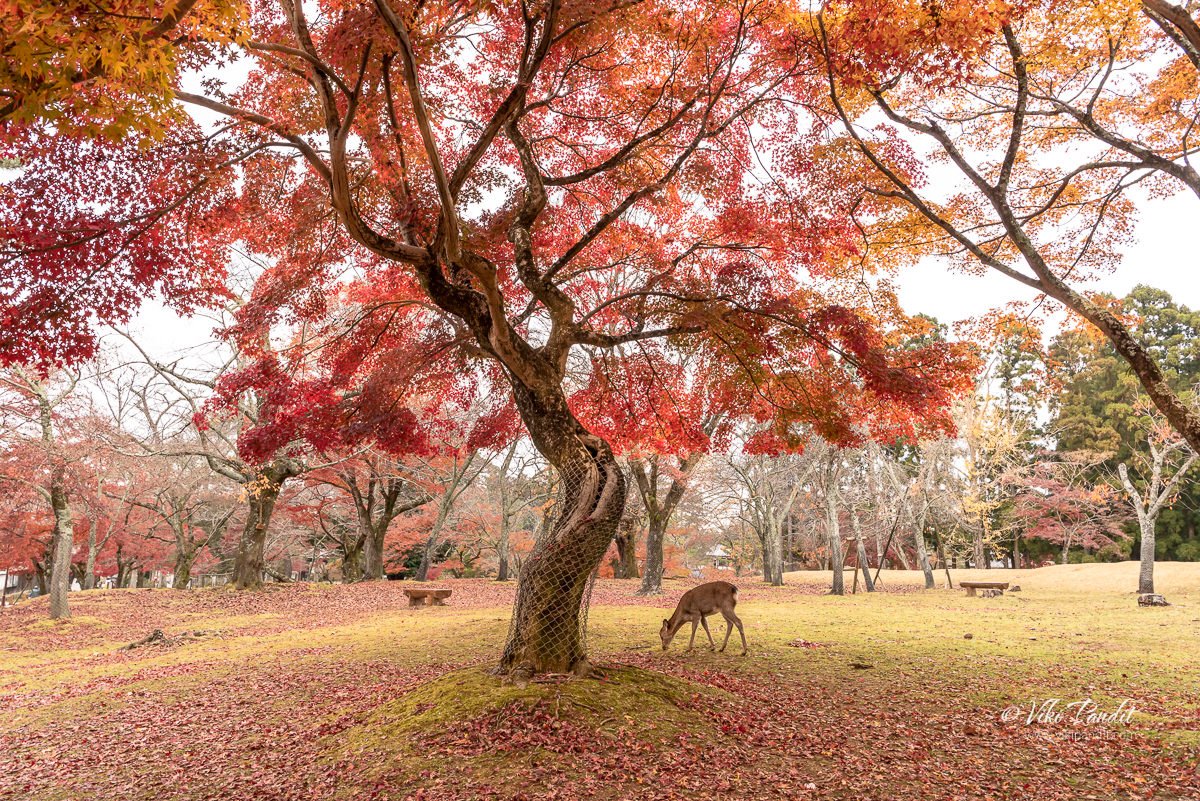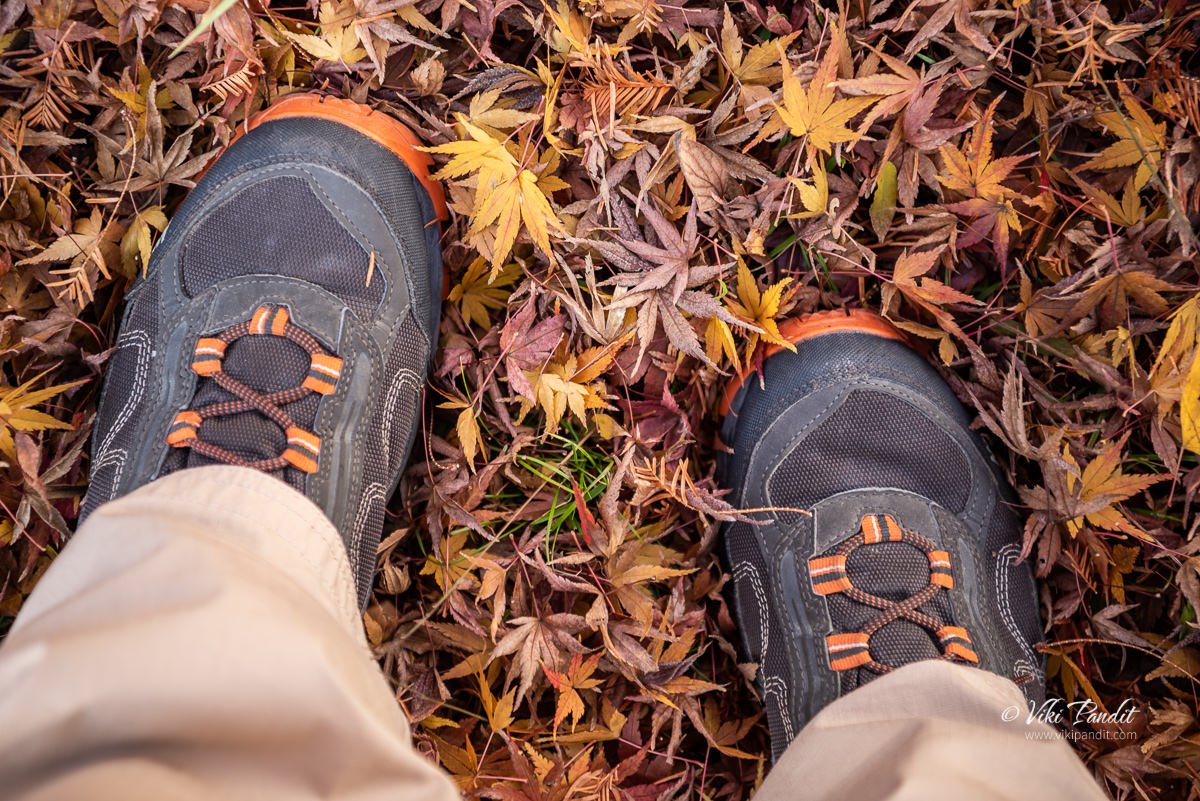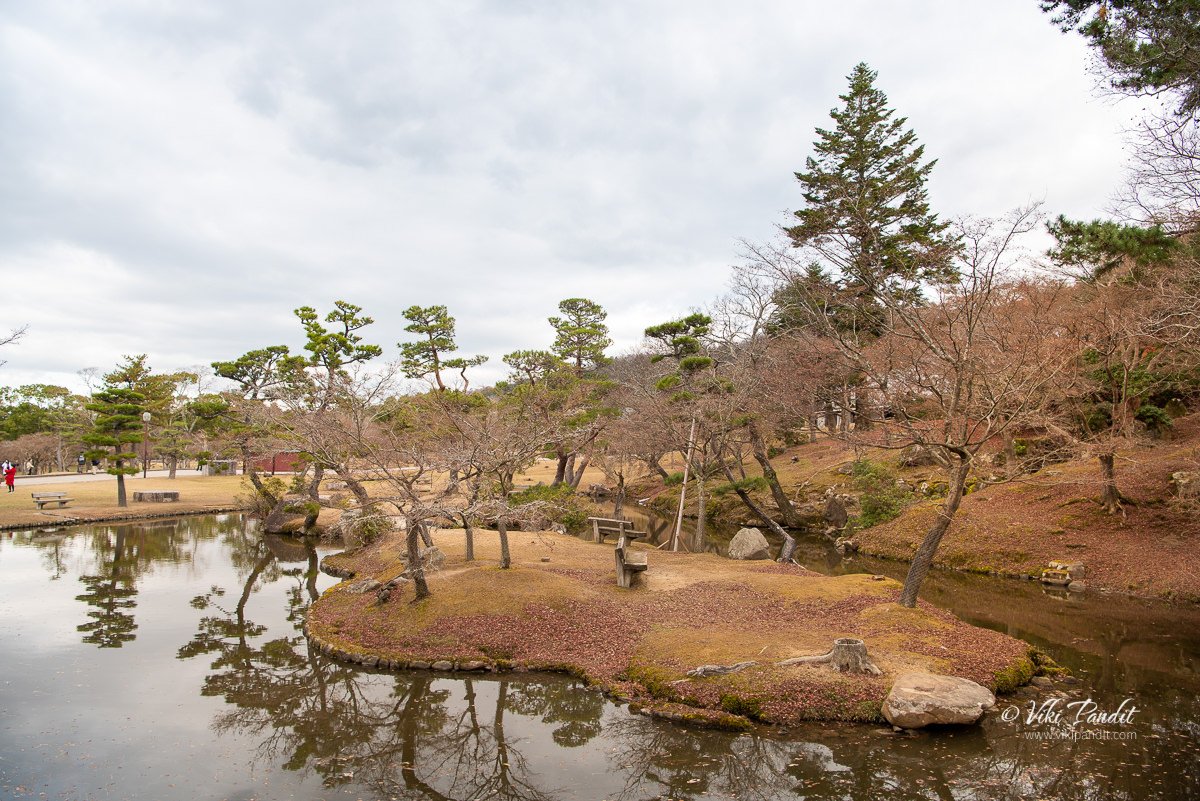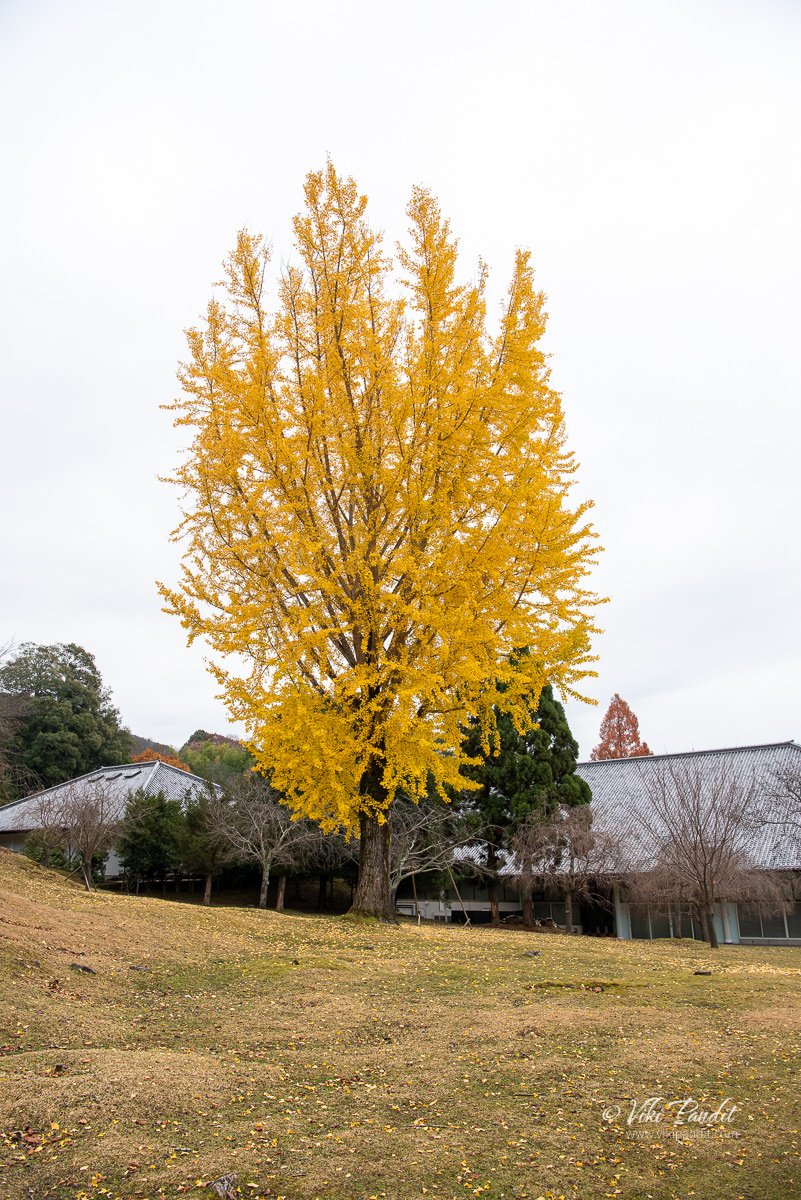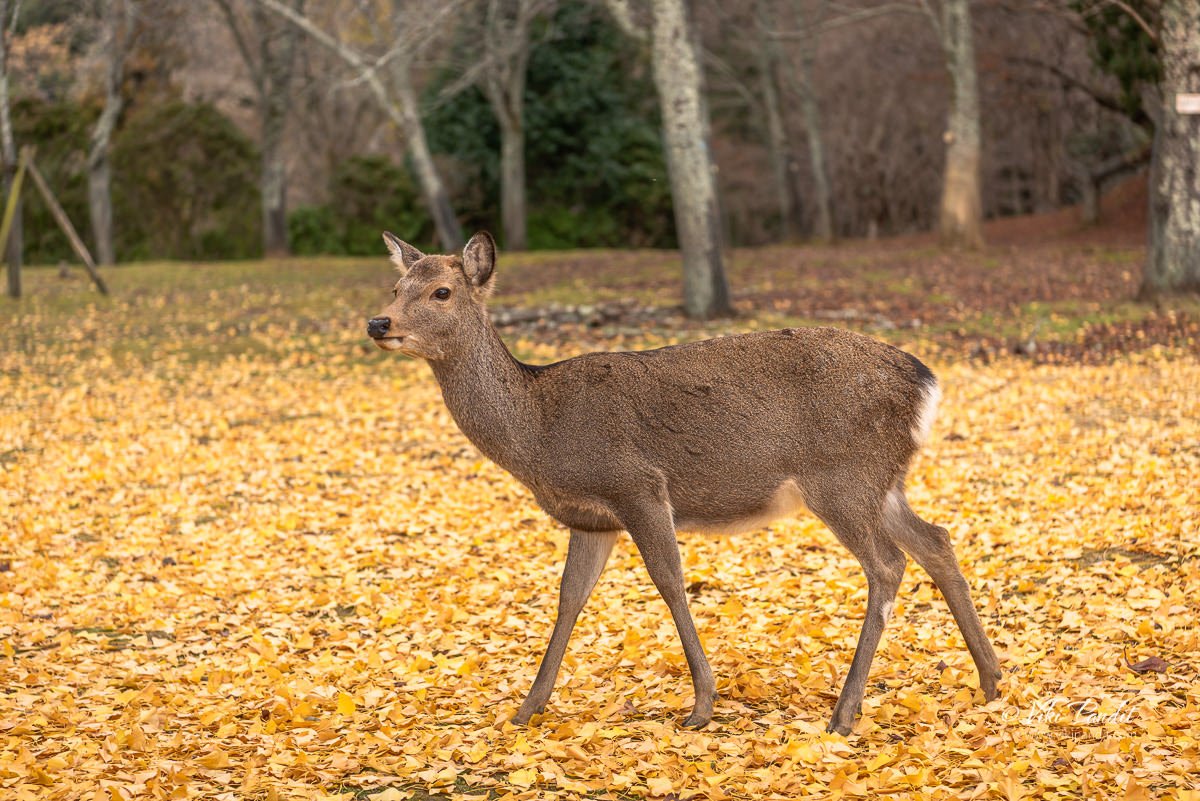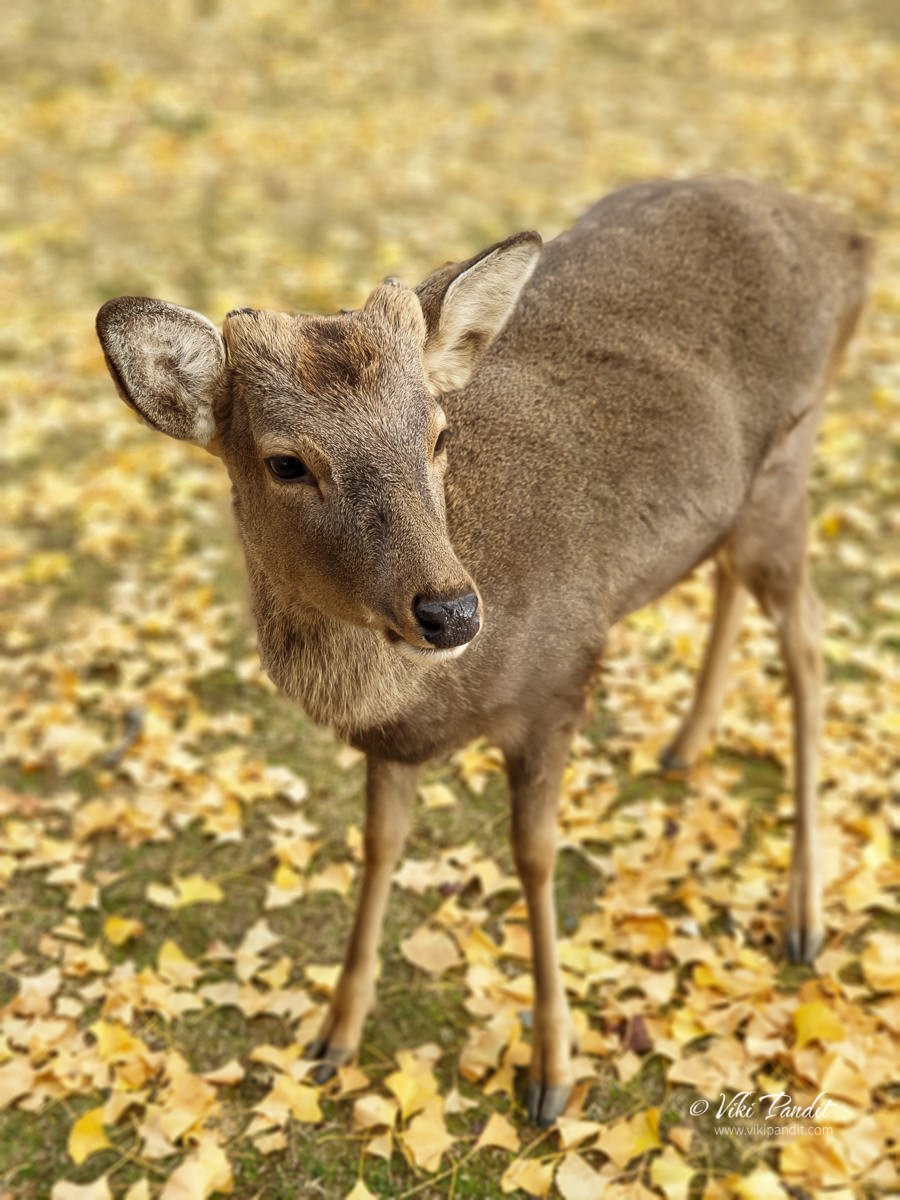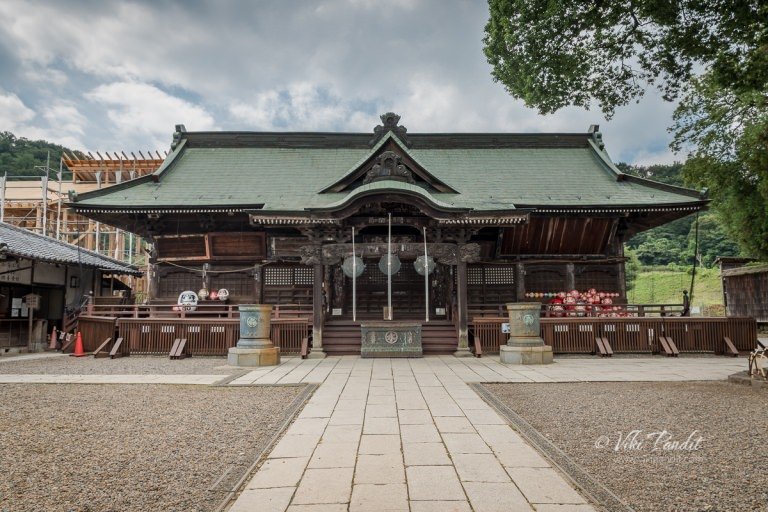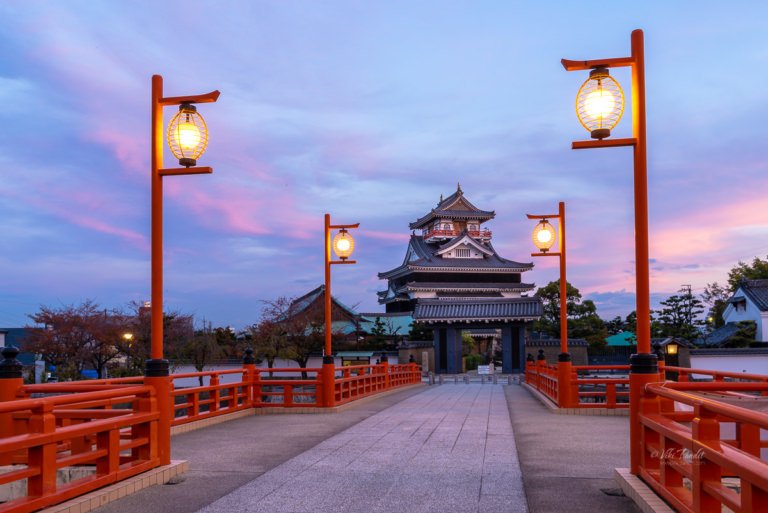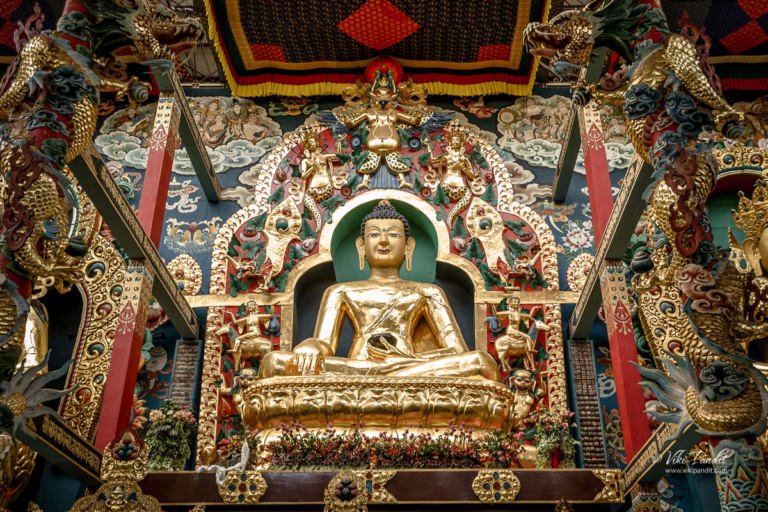Through my early teens, I grew up consuming detective tales from the likes of Agatha Christie and Arthur Conan Doyle. These classics have led me into believing the concept of criminals eventually going back to their place of crime. My crime is that I fell in love with the heritage city of Nara. Since knowing it from the Fall season of 2015, I have tried my best to visit the city that has somehow stopped in time, to breathe in its pure air and enjoy its hospitality.
Nara was the first capital of Japan and has a rich history that has kept me captivated since I first set my foot here in the fall of 2015. Nara Park is the central attraction of the ancient city and also one of the most amazing places to enjoy the fall season in the Kansai region. The lavish park contains hundreds of Momiji (Japanese maple) trees that turn red, brown, and yellow imparting a vivid range of colors to the area. The wandering herds of deer adds a touch of fantasy to the already beautiful canvas created by nature.
Fall in Nara
In Japan, the fall season or Koyo starts towards the middle of September, just like in most countries in the upper reaches of the northern hemisphere. The Japanese maple or Momiji is native to Japan, Korea, China, and eastern Mongolia, and southeast Russia. The northern-most island of Hokkaido is the first to experience the fall season and the leaves already start turning red towards the middle of September.
This phenomenon gradually spreads towards the south of the Japanese archipelago until the middle of November when it reaches the southernmost areas. Late November to early December marks the beginning of fall colors in western Japan, and even though Kyoto is where the real magic plays out, Nara is not bad either.
I and my wife, Mani were staying at the Piazza Hotel in Nara. It is kind of a lavish place to stay but it is also kind of difficult to find lodgings in Nara with most hotels booked almost 6 months beforehand. We woke up at dawn, freshened up, and after a hot cup of coffee walked down to Nara Park. The hotel is located adjacent to the JR Nara Station and it is at least a 20-minute walk to Nara Park. I was back after almost a year and the old memories of Sanjo-dori came flooding back as I made my way along the narrow road which had been a big part of my life when I used to live in Nara. On the way, we grabbed a couple of onigiris for breakfast from a convenience store.
Ukimido Pavilion
Our first stop was one of the hidden treasures of Nara Park – the Ukimido Pavilion, located in the middle of the Sagi-ike Pond. I call this place hidden because most of the tourists remain concentrated near the Todai-ji, Kasuga-taisha, and Kofuku-ji areas. Very few of them have the energy for the walk to this little place located in a corner of Nara Park.
The beautiful wooden pavilion looks as if it is floating on the pond’s water and is a tranquil place to visit. The early morning mist makes it all the more irresistible. The pavilion is usually lit up every night, which is when I love it the most. If you are in Nara in mid-August, do not miss out on the Nara Tokae Lantern Festival when you can indulge in the visual pleasure of a hundred lanterns lighting up the pavilion. That sight is guaranteed to take your breath away.
After capturing the pavilion, we hung around the place wandering about the Sagi-ike Pond since our next stop was Todai-ji and it doesn’t open before 8 am. Most of the trees surrounding the pond had lost a good part of their leaves during this time. Some of the trees that had started later were still hanging on to their colorful leaves.
Specifically, the word “oyo” refers to yellow leaves, and the word “katsuyo” refers to brown leaves.
The species of maple generally determine the color the leaves will change to red, yellow, or brown. Here in Japan, people refer to this phenomenon as Koyo. Although the word Koyo literally means “red leaves,” it is colloquially used to refer to the phenomenon of changing autumn colors, mainly when it occurs to the leaves of deciduous broad-leaf trees before they fall to the ground.
No visit to Nara Park is fulfilled without a visit to Todai-ji. We were the first couple to enter as the admissions booth opened. The temple attendants were still getting everything ready inside the temple grounds. It was pretty cold so we skipped the purifying ritual at the Chozuya and went directly towards the Great Buddha hall also known as Daibutsu-den.
Before entering we grabbed some incense sticks and lit them up at the altar in front of the Daibutsu-den gate. It is not required but recommended that you donate some Yen here before you take the incense sticks. The scent emanating from the incense slowly surrounds you driving your mind and soul away from worldly distractions. Please note that this is not how Todai-ji will be if you visit a little later in the day. The place is literally crawling with tourists as the day moved towards the after.
While climbing down the steps of Todai-ji, I clicked this shot of the Nakamon Gate with the Octagonal lantern in front. The lantern is as old as the temple itself. In fact, the wooden temple was recreated many times but the lantern has remained as is throughout the history of Todai-ji. I have written a detailed article on the history of Todai-ji, if you are interested to know more.
After paying respects at Todai-ji, we walked towards the back of the temple where I knew there was an interestingly shaped Momiji looking all beautiful in shades of red and yellow colors. The Momiji trees around Nara Park are kind of spread out, so you need to know from before the spots where they are the most alluring.
We gradually walked towards the front of Todai-ji, where near the Kagami-ike Pond, you can also find some lovely Momiji trees. Of all its close kin, this Japanese red maple is not only a sensation because of its brilliant fall color, but also because of the hues of red, it lends to the landscape throughout the winter.
The history of Momijigari
From Todai-ji we slowly moved towards a wooded area of Nara Park. This area is full of Momiji trees. Even though some of the trees had already become bare it was still a lovely sight to behold.
When autumn deepens and the leaves begin to turn color in the fields and mountains, hunting for autumn foliage is a popular pastime in Japan. Over the years it has become like a ritual with its own name called Momijigari – the Japanese tradition of visiting areas where leaves have turned red in the autumn.
This tradition of Momijigari was born during the Heian Era (794 – 1185) among the aristocrats of Kyoto. The word comes from the two Japanese words Momiji and Kari. Momiji means red leaves. Kari originally used to refer to the act of hunting wild beasts, but over the years it came to be used as a word for catching animals and harvesting crops. You can find its use in Japanese words like “kudamono gari” (fruit hunting) and “shiohigari” (clam hunting).
Such alluring was the beauty of the fall foliage that the Japanese nobility became great admirers of this nature’s beauty. They borrowed the words Momiji and Kari and combined them to create Momijigari to mean “red leaves viewing”. Trees were planted specifically in continued rows for this autumn hobby of the era’s elite.
Poetry about Momiji
In Japan, the maple is said to possess a poetic, rather than visual, quality although I would beg to differ. Cherry trees are generally depicted in Japanese painting, but the maple is best described in waka – Japanese songs, and haiku – Japanese poetry.
As more and more trees were planted across each prefecture in Japan, it lent a fantastical beauty to the temples in the region. The ancient collection of Manyoshu poetry compiled in the eighth century includes numerous stories involving Momijigari.
If you have read the classical Heian Period novel “The Tale of the Genji,” the hunting for fall leaves also finds a mention here. A large section of the Kokin Wakashu poetry collection, compiled around the beginning of the same period, is dedicated almost entirely to autumn leaves.
Varying in size from large shrub to small tree, the Japanese maple is a species with many variations. You can enjoy the spectacular fall colors at the many historic shrines and temples at Nara Park. During Nara’s autumn foliage season, many places have various events, special viewing admissions, and scenic night lightings. As we kept walking we went past the wooded area into the wide-open spaces at the base of Wakakusayama with herds of deer grazing around.
The deer are generally gathered around this area because the tourists feed them the local Shika senbei. They love it! We also bought 5 packets, each costing 200 yen.
Be prepared! even as you open the packets, they will come charging at you sniffing the subtle smell of the pancakes from long away.
After feeding the deer, we walked to the base of Mt. Wakakusa where lay a couple of Ginko trees. Among the beautiful Momiji trees, the Gingko is another group of trees that make autumn brilliant with its color. Also called “ichō” in Japanese, they are completely different from Momiji as they are not red but bright yellow and do not have the same shape. Unlike the Momiji trees, the Gingko trees grow to long heights.
Ginkgo is an ancient species, so old that it is said to have flourished during the age of the dinosaurs. Around 1 million years ago, though, the population began to fall and it only narrowly avoided extinction. Until a few hundred years ago it grew almost exclusively in northwest Asia, but global cultivation efforts have brought numbers to such a level that the ginkgo was removed from the endangered species list.
The Ginkgo is a relative newcomer to Japan, having arrived from China around 1,000 years ago. It has thrived over the centuries to become a familiar aspect of Japanese life. The area takes on the appearance of being carpeted in gold – there’s something truly magical about it. The smell of the senbei quickly gathered a couple of deer to us.
Nearby you can find a wooden pavilion. We kept our bags on the benches and had a lovely time feeding the deer.
After an entertaining morning in Nara Park, we went back to get some lunch at Kasuga Chaya. Its located near all the souvenir shops before you reach the Nandaimon Gate of Todai-ji. It’s a cute ticket restaurant where you need to buy your meal tickets from a vending-type machine before you take a seat. I had a big bowl of Udon. The warm soup sure made me feel good after the early morning wandering in a cold and cloudy Nara Park.
In the evening we came back to the Park to catch a beautiful sunset at Nigatsu-do. Once the sun had set behind the mountains, we wandered about the grounds catching a few of the Momiji trees in the street lights
You can find this tree near the Kagami-ike Pond. It was getting pretty cold by then, so after we got a couple of shots, we started on our way back to the hotel.
Thanks for reading! One of the best aspects of travel in Japan is enjoying the natural beauty of the four seasons. Fall is known for its especially nice weather and is a season when one can taste many delicious foods, making it a great time for sightseeing. Just like with the sakura, this season holds a very special place in Japanese people’s hearts as it reminds everyone that everything is ephemeral and that we need to enjoy what is given to us before it vanishes.
The autumn foliage of Nara Park is exceptionally impressive. You can see beautiful autumn leaves in every part of the expansive grounds. The ability to enjoy seeing deer and maple trees while you gaze at the temples through the trees is unique to the park. I hope you liked my story. Please leave your comments or questions using the comments form below. I would love to know about your experiences at the park. You can also connect with me on Instagram.
Apart from Nara Park, you can also visit these recommended spots:
1. Isui-en Garden
2. Hasedera Temple
3. Mt. Yoshino
Nara has a scattered fall where some of the trees begin to go red with the onset of November and some of them stay red till early December. It is always smart to come with a couple of days in hand because you will run into grey days with extreme cloud cover and intermittent rainfall.
Disclaimer: The information presented in this article is based on the time I visited the premises. Note that there might be changes in the prices of merchandise and admission fees that might have occurred after this article was published. At times the facility might also be closed for repairs or for variety of other reasons. Kindly contact the facility or facilities mentioned in this article directly before visiting.
Usage of this site indicates acceptance of my Terms and Conditions.
Credits: The historical information presented herein is gathered mostly from local guides that were re-inforced via historical writings.
